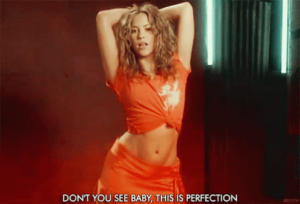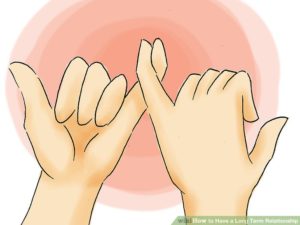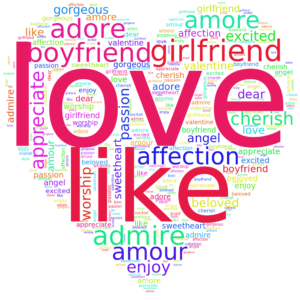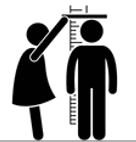Article by: Nicole Moughrabi, Joely Watson, Angie Spasojevic, Kaylie LaGuardia, Alexis Mattson
Do you ever find yourself looking at another person and thinking, “that person is SO attractive.”
Likely.
Do you ever question why? What about this other person is so attractive?
This probably seems like it comes with obvious answers. They’re attractive, they’re funny, whatever. Although these characteristics certainly stand out, have you ever considered that you may be developing feelings for someone just because they happen live near you? Or the color of their shirt?
If you want to know about some of the more surprising reasons that we become attracted to one another, welcome to: 10 reasons you are totally crushing on them.
1. Women in Red:
Women wearing red have often been romanticized as attractive beauties in classic tales from the beginnings of literature and film. To test this iconic concept, Elliot & Niesta (2008) conducted five experiments to examine the effect of the color red on men’s attraction to women. Confirming the old fables, men found women more attractive when wearing red compared to other colors, and even when women were displayed in pictures with a red frame (compared to a white frame). Women who rated the same pictures did not exhibit the red effect, and color also had no impact on men’s ratings of women’s personality traits (like kindness or intelligence). Thus, let it be known that the stereotype holds, women in red are making power moves.
2. Waist-to-hip ratio:
In the words of Shakira, “My hips (and waist!) don’t lie.” According to the results of three studies, heterosexual men are attracted to women with lower waist-to-hip ratios (in other words, an hourglass figure). Study 1 documents the fact that while body sizes of Playboy models and Miss America winners have changed over the years in accordance with cultural trends, the prevalence of models with low WHR has remained stable. Studies 2 and 3 found that men rated women with lower waist-to-hip ratios as appearing to be healthier and more physically attractive than women with higher WHR. Why would this be the case? As it turns out, low WHR is associated with women’s reproductive health and fertility. While men might not consciously be thinking about “child-bearing hips,” ancestral men who were attracted to women with low WHR had better reproductive success than men who didn’t, and men today still retain that preference.
3. He’s Got Money $$$:
If Justin Bieber hadn’t become rich and was instead sitting in your English class, would he still be considered one of the most attractive people on the planet? Research using 1000 male advertisements in two news papers showed that males are considered to be rated as much more attractive when it is known that they have either more money or power. In fact, when asked to describe themselves, men were even more likely to mention their wealth than women were. This finding has also been replicated and has become a known mechanism for attraction in social and evolutionary psychology. Evolutionarily, ancestral women who preferred mates that provided security had better odds of being able to feed and raise successful offspring, and these preferences have been passed down to women today.
4. Birds of a feather flock together:
Have you ever heard that “Opposites attract?” Well, in actuality, this might not be the case. According to one study, people tend to find others more attractive if they share common traits, interests, beliefs, and attitudes. Participants were asked to rate photograph faces as “highly attractive,” “moderately attractive,” and “unattractive.” Afterwards, personality information was added about the people in the pictures, and participants were asked how similar the person was to themselves and how much they liked the person. The results indicated that as perceived similarity increased between the participants and the people they rated, attraction increased too. This suggests that similarity may drive attraction moreso than complementarity.
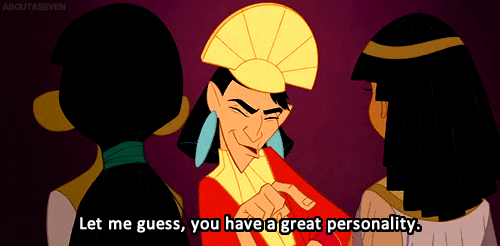
5. Their feelings for you are a mystery:
They love me. . . They love me not? Have you ever heard the phrase “we want what we can’t have?” As odd as it may sound, we may find it attractive when someone is uncertain in their feelings towards us. A study done by Whitchurch, had 47 undergraduate women look at 4 male profiles. They were told that the men either liked them tremendously, liked them only an average amount or liked them either tremendously or an average amount (in other words, they made the women uncertain about how much the men liked them). Surprisingly, the female students were far more attracted to the men that were within the uncertain condition in comparison to the other two conditions. So, perhaps a little uncertainty can pique our interest in someone and leave us wanting more. (However–point 6 shows us that this isn’t the end of the story.)

6. Commitment is key:
While the ambiguous feelings of a “mystery man” may increase initial attraction, research also indicates that relationship success is more likely when partners are clear about their commitment to each other. The happiest couples that are in it for the long haul tend to have higher levels of commitment and investment in the relationship, which is predicted by “quality of alternatives,” or in other words, whether you only have eyes for your partner, or are still looking around at other potential partners. In contrast, people who seem to always be looking for a “better option,” demonstrate less commitment and have shorter, less satisfying relationships. So, while there may be appeal in someone that leaves you itching for more attention, you’re better off with someone who is willing to be clear about their feelings.
7. The benefits outweigh the costs:
It may not sound very romantic, but research on social exchange theory suggests that in some ways, our relationships may operate according to economic principles like “cost/benefit” ratios. In other words, if one partner feels that they incurring more costs from a relationship than benefits, they will likely find that relationship less satisfying, and thus be more likely to break it off. This effect has been demonstrated in committed relationships of both opposite-sex and same-sex couples.
8. They’re the class-clown:
Everyone loves the funny guy… or gal! In one study, undergraduate students were given descriptions of a potential romantic partner, which described the person as desirable in a number of important ways (e.g., being attractive, ambitious). Additionally, the researchers manipulated what participants were told about the person’s sense of humor: some were told that this person had a good sense of humor, some were told that the person had an average sense of humor, and some were told that they did not have a sense of humor. Both men and women in the study rated the people described in the profiles as much more attractive if they were told that they had a good sense of humor. So keep those jokes coming!
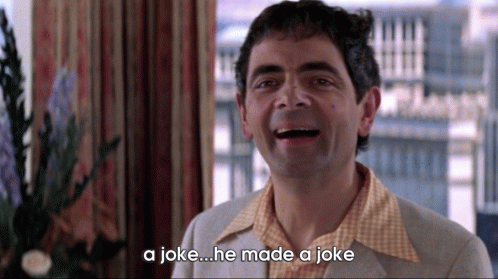
9. You live close to one another:
Your attraction to someone can be heavily influenced by a phenomenon called “the proximity effect” which describes the increase in attraction to people who are physically close to us. This effect has been demonstrated in a variety of studies. For example, Priest and Sawyer conducted research with 25,000 pairs of college students, and tracked their proximity to each other (i.e., how far away were their dorm rooms from each other) and their attraction to one another over a period of four years. The researchers found that simply living near each other and seeing another person regularly tends to increase attraction to and liking for that person.
10. He’s just the right height:
Tall, dark and handsome is what every woman wants, right? Turns out, most women actually prefer average-height, dark and handsome. A recent study evaluated women’s attraction to men who were described to be short, medium height, or tall. They predicted that women’s attraction would increase as height increased. What they found, however, was that males described as being “medium height” were rated as more attractive and more likable than either males who were described as short or tall. Interestingly, when men were asked the estimate how women would evaluate men’s heights, their ratings did not change as a function of height. However, the men’s own ratings reflected a preference for short men relative to tall men (this was true regardless of the participants‘ heights).
Hopefully we’ve helped you solve the mystery of why you’re totally crushing. But if not, I hope you enjoyed learning just a little bit more about the psychology of attraction!


